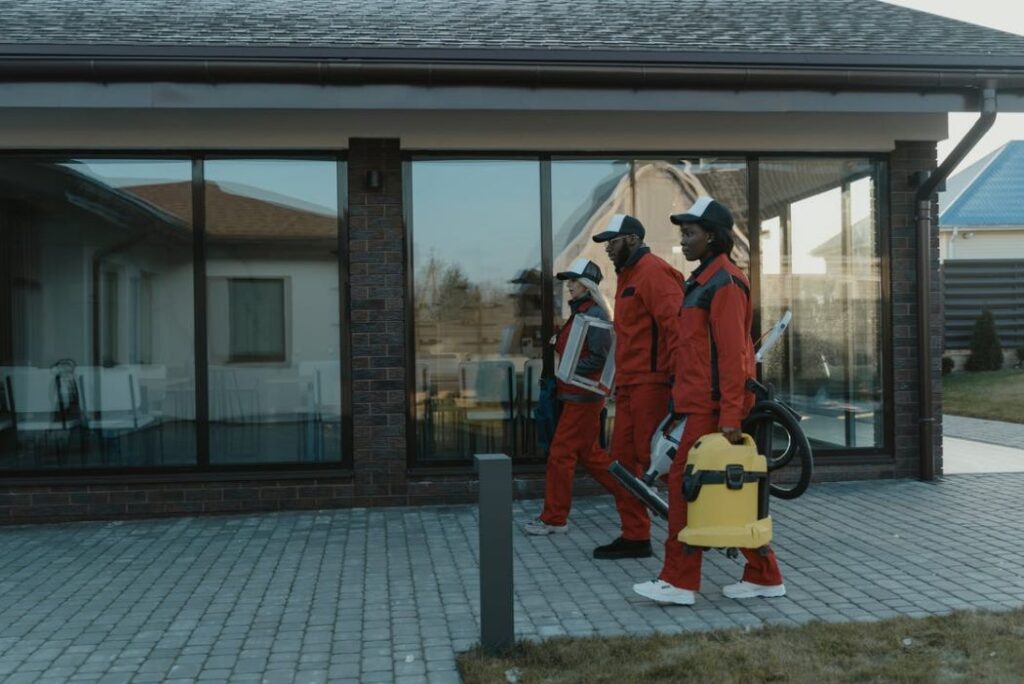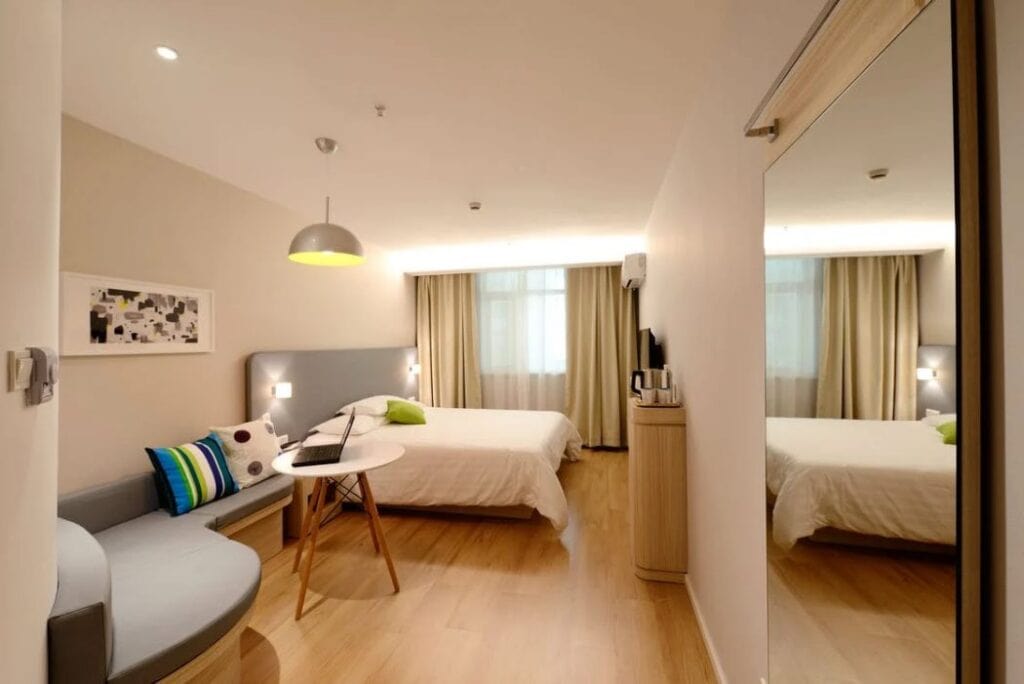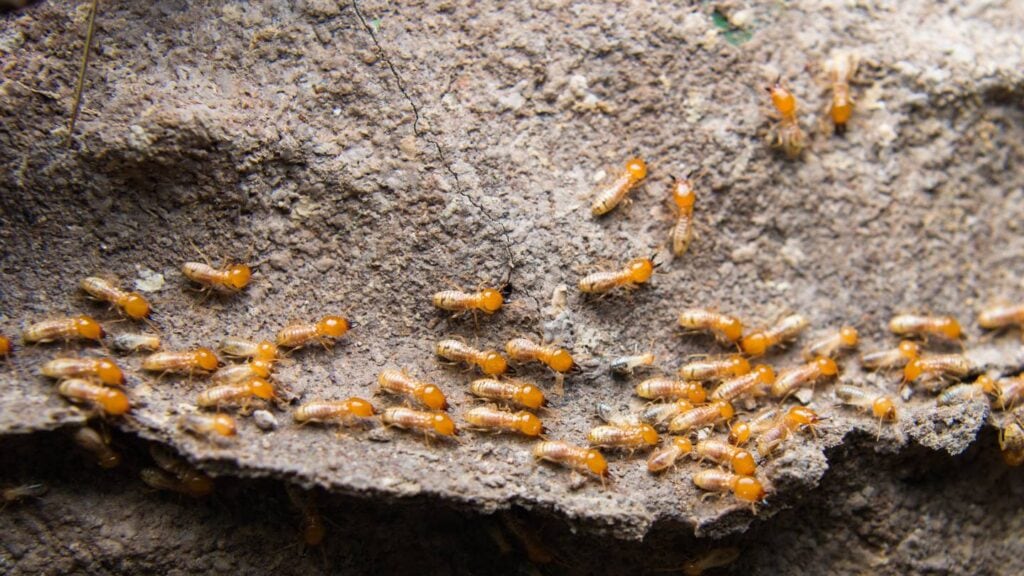Have you ever considered the potential unforeseen consequences of protecting bees with chemical treatments? It makes one wonder if the same creatures we are attempting to rescue are being unintentionally endangered.
Using chemicals to eliminate bed bugs is only sometimes a good idea. Even though the goal is to get rid of pests that are bad for the environment, these treatments can hurt the health and survival of bee hives. We'll learn about the complex risks these treatments pose as we learn more about the topic. These risks will challenge the belief that these treatments are the best way to save bees.
If chemical therapies aren't the best option, what other options exist? Come along on this exploration as we work through the challenges of managing bee pests and look for bee-friendly and sustainable solutions for peaceful living with the natural world.
Deadly Dangers for Bees
Pollinators of many crops, wild plants, and bees are in danger from various sources. For their preservation and the ecological harmony they uphold, it is essential to comprehend these pressing dangers. Among the impending threats are these:
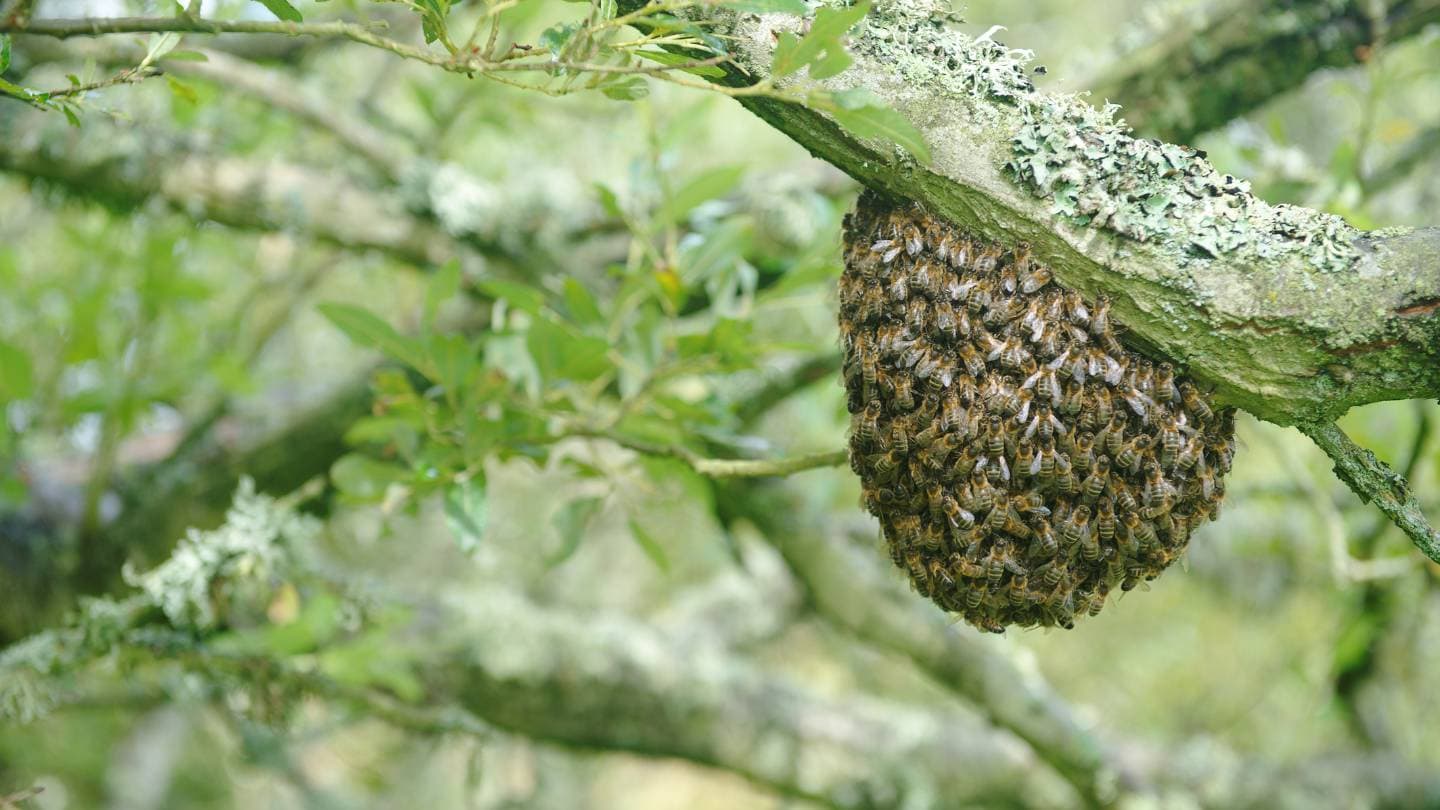
Effects On The Health And Death Of Bees:
- Pesticide Exposure: Bees are vulnerable to a wide range of agricultural chemicals. Impaired navigation, diminished immunity, and decreased reproductive success are some negative impacts of pesticides like neonicotinoids on bee health.
- Pathogens and Diseases: Bees are vulnerable to various illnesses and parasites, including Nosema species and Varroa mites. These diseases have the potential to damage bee colonies and raise mortality rates.
- Poor Nutrition: Bees are more susceptible to stress because they cannot forage for a diversified and healthy diet due to changes in land use and the depletion of diverse floral resources.
Bee Behaviour And Colony Structure Disruption:
- Foraging Challenges: Bees' foraging behaviours can be disturbed by changes in the environment, the loss of habitat, and chemical exposure. Because of this, the colony's food supply may decline, affecting their health.
- Queen Failure: The queen bee is crucial to the health and success of her colony. The capacity of the colony to survive and procreate can be severely impaired in the event of queen failure, which can result from exposure to pesticides or illnesses.
- Swarming and Absconding: Things that cause stress can cause the group to swarm or abscond early. These actions may lower the number of animals in the group, leaving it open to new threats.
How Pesticides Affect Honey Bees?
Professional beekeepers have known for centuries that many flowers from trees, shrubs, weeds, and even food plants are good for honey bee colonies. A flower setting that is healthy and varied has always been the key to making a lot of honey.
It's possible that the only problems they had were microorganisms, diseases, and parasites that could infect and kill the bees and their hives or the unpredictable weather that could make it hard to grow flowers for some years.
Agrochemical pesticides, used to manage insect pests, weeds, vermin, and plant diseases, have been dispersed over woods, fruit orchards, and big crops in recent decades, posing a new challenge to beekeepers' livelihood. Since bees are insects, they are vulnerable to any toxin meant to kill nuisance insects. Therefore, it was clear from the start that chemical insecticides may pose a significant threat to bee populations.
What about other types of poisons, like fungicides and herbicides? Could they also make honey bees less productive? Many say these chemicals are safe for bees if they aren't meant to hurt animals. Research done in the last few years shows otherwise in countries that have used pesticides for a long time.
It is now known that using herbicides on a large scale and for a long time reduces the variety of flowering plants, affecting the bee hives and their ability to produce honey.
Furthermore, it has been discovered that some fungicides and pesticides work better to kill bees than chemicals alone. A new concern to beekeepers has arisen recently due to the careless use of acaricides in apiaries to manage parasites like Varroa destructor.
These chemicals are also poisonous to honey bees but to a lesser extent. Not unexpectedly, several authors have connected pesticide use to colony collapse disorder (CCD) and parasites and illnesses.
Bees Being Around Agrochemicals
Most insecticides are sprayed over the field canopy. Herbicides and fungicides, on the other hand, are usually sprayed directly on the soil before crops are planted. In these situations, tiny droplets and dust from the applications can land on bees flying over the treated fields or nearby. This is because the wind can take the droplets and dust hundreds of metres away from the crop.
Because spray solutions contain concentrated amounts of these chemicals, one droplet may be enough to kill a bee. This is the most common reason bees have been killed in the literature. Bees don't come into close contact with granular pesticides mixed into the soil, like herbicides.
Pesticide Toxicology
Toxic compounds known as pesticides have distinct mechanisms of action that allow them to regulate a certain group of organisms by disrupting their metabolic pathways. Fungicides inhibit the formation of cell membranes or another metabolism specific to fungi, herbicides and acaricides disrupt photosynthetic capacities or the synthesis of essential organic compounds, and acaricides and insecticides kill mites and insects by interfering with their neuronal activity or moulting process, respectively.
Further types target smaller animals, such as rodenticides and bird repellents. A biocide is a poison with a wide spectrum of actions that can destroy any living thing, whether it be a microbe or a huge animal.
Honey Bees Are Bad For You
Because of the weather in Australia, all of these pests could live, grow, and become established if they were brought there. These pests would cause much trouble if they stayed in Australia.
Varroa Mites (Varroa Destructor And V. Jacobson)
- The haemolymph of bees (dragon, worker, and pupae) is a food source for parasitic mites outside the beehive.
- Testing adult bees or carefully inspecting brood can reveal the problem.
- Adults and pupae that are deformed (stunting, broken wings, legs, and abdomens) are signs of Parasitic Mite Syndrome and colony decline.
- In addition to compromising the health of the colony and making it more susceptible to disease, varroa mites can transmit viruses.
Tracheal Mite (Acarapis Woodi)
- A parasite that lives within the honey bee's respiratory system.
- Reduces the lifetime of honey bees by affecting their ability to breathe, which weakens and illens them.
- Population loss, bees moving on the ground, and bees holding their wings at strange angles (called "K wing") are all signs.
- Dissecting and analysing the trachea under a microscope is necessary for a correct diagnosis.
Tropilaelaps Mites (Tropilaelaps Clareae And T. Mercedesae)
- Entomopathic mites from the outside world prey on the bees' hemolymph throughout their life cycle.
- Close inspection of beehives or testing of adult bees might reveal the presence of pests.
- Symptoms can manifest as stunting and injured wings, legs, and abdomens in adults, as well as Parasitic Mite Syndrome and a decrease in colony size in pupae.
- Additionally, viruses can be transmitted by tropilaelaps mites, which worsens the health and illness susceptibility of the colony.
Top Non-Toxic Pest Control Options
Toxic pesticides are the last thing anyone wants to do when dealing with a bug infestation. Your family and pets will be safer with non-toxic options. If you are concerned about pesticide health risks, this blog post will review several non-toxic options to keep pests at bay.
Common Non-Toxic Pest Control Methods
Getting rid of bugs doesn't have to involve using harmful chemicals. A small selection of the most common approaches are these:
Use Of Traps
You can eliminate bugs like flies, spiders, and mice with several different traps. Set the traps where you have seen pests or think they might be.
Garden Ambience:
Swapping out your outdoor lighting for something more pest-resistant, like yellowish or orange hues, rather than the dazzling white lights that attract flies and other pests.
Waste Management:
Put lids on trash cans that fit snugly and take out the trash often to ensure appropriate disposal. Pests will find your food scraps and other items if you leave them outside.
Management Of Culture:
Do your best to maintain a tidy and clutter-free home. Get rid of heaps of wood or leaves that bugs could use as a nest.
All-Natural Repellents:
Lemon juice, vinegar, and essential oils are just a few of the natural repellents that can be used to keep pests out of your house. Try utilising one or more of these techniques to determine if they work for you.
Spray That Is Safe
You can buy different kinds of natural sprays online or at places near you, like Whole Foods Market (referenced link). Essential oils like peppermint, clove, and citronella are often used because they naturally keep bugs away. One bad thing about the non-toxic spray is that it needs to be used more often than synthetic poisons.
Helpful insects
Insects like praying mantises, ladybirds, and lacewings feed only on garden pests, protecting plants from harm. These insects can be bought through mail-order catalogues or online stores.
Chips Of Cedar
Spread cedar chips around your yard and home to keep ants and other small bugs away. They can't stand the smell of wood, and insects, like termites, also stay away.
Apple Cider Vinegar
To deter ants, pour white vinegar around the outside of your house. Many bugs won't come near your house or build nests because they hate the stench. Plants shouldn't be sprayed directly since soils with too much acidity can kill them.
Beekeeping Chemical Treatment Best Practices
Correct Methods Of Application:
- Read Labels Carefully: Dosage, application methods, and safety measures should always be followed according to the manufacturer's instructions.
- Dilution: Make sure the ingredients are diluted correctly according to the instructions. Do not use concentrations that are higher than what is suggested.
- Apply During Non-foraging Periods: Treatments should ideally be done when bees are not actively looking for food so that bees are not exposed to them and their activities are not interrupted.
- Avoid Drift: When using a spray, pay attention to the direction of the wind to avoid the chemical drifting into unwanted regions or hives.
- Application Equipment: To avoid contamination, use specific equipment for applying chemical treatments. This equipment needs regular cleaning and maintenance.
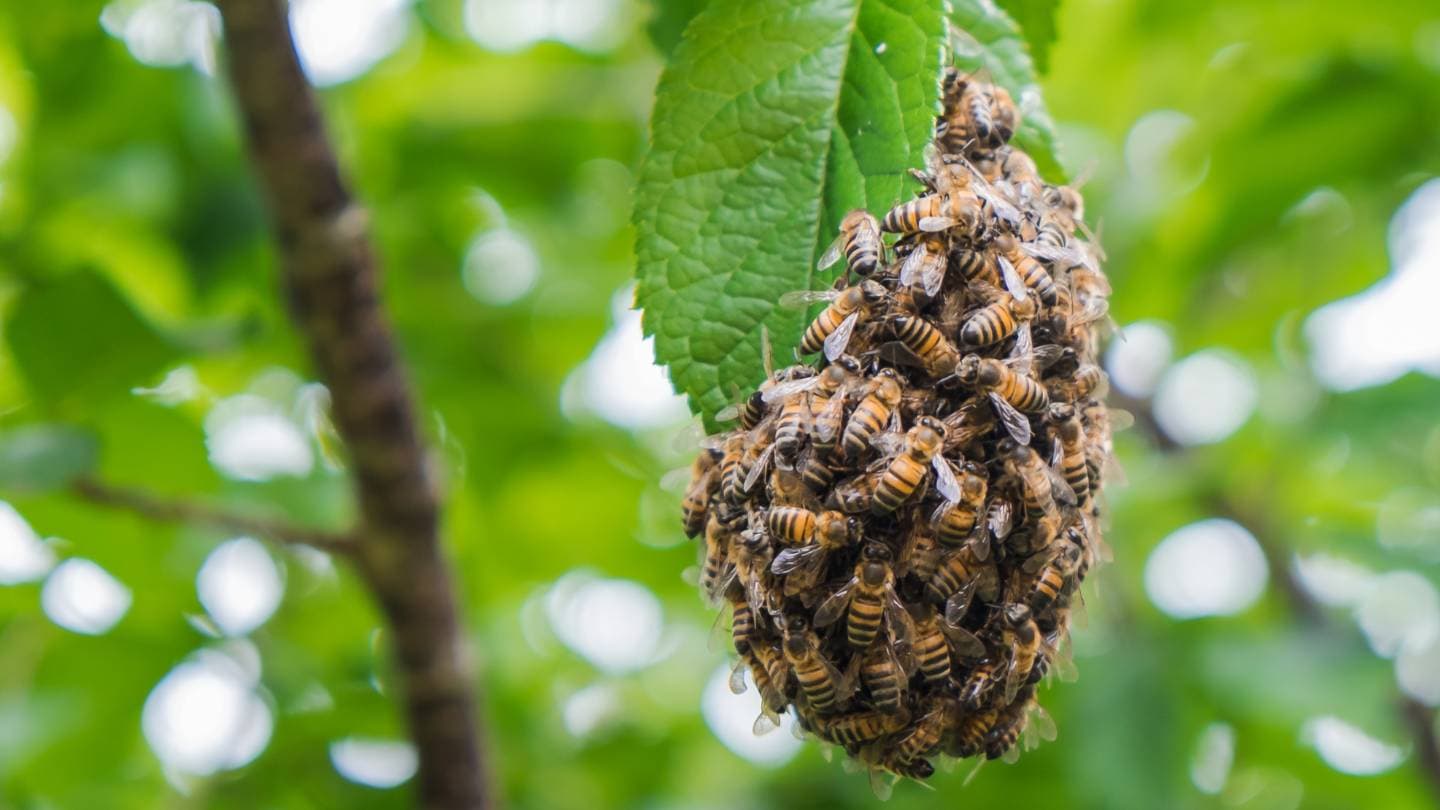
Beekeepers' Safety Measures:
Emergency Preparedness
Remember to keep a first aid kit close by and know what to do if someone gets poisoned or exposed by accident. Learn who to call in an emergency and what to do if exposed to chemicals.
Respiratory Protection
Wear a mask or respirator if you can breathe in chemical fumes or dust while applying the product.
Storage
Keep poisons away from kids and pets in a cool, dry place. Please ensure the lids on items are tight so they don't leak or spill.
Protective Gear
When working with hives or treatments, you should always wear the right safety gear, like bee suits, gloves, and veils.
Wash Hands
Always use plenty of soap and water to wash your hands after working with chemicals or treatments.
Dispose Of Waste Properly
By local laws and regulations, dispose of contaminated objects, empty chemical containers, and unused chemicals.
Conclusion
Chemical treatments for bee pests can have bad effects that could put bee hives' health and life at risk. Some of the most important dangers to bee populations are pesticides, diseases and pathogens, poor nutrition, and changes in bee behaviour and colony structure.
Professional beekeepers have known for a long time that honey output depends on flowers that are healthy. But agrochemical pesticides, which are used to get rid of insect pests, weeds, rodents, and plant diseases, have spread through forests, orchards, and big fields, making it harder for beekeepers to make a living.
Many people think that fungicides and pesticides are safe for bees, but they can also hurt their ability to make honey. Researchers have found that using herbicides on a big scale makes fewer flowering plants, which can affect beehives and their ability to make honey.
Using too many poisons to kill bees is not always the best idea. For example, using too many acaricides in apiaries without being careful has been linked to colony collapse disorder (CCD), parasites, and diseases.
Some agrochemicals can kill bees through spray solutions and drops that are too concentrated. Pesticides work in different ways, but they all work by messing up the metabolic pathways of certain species. Rodenticides and bird repellents are two types that are meant to kill small animals.
In conclusion, chemical treatments may get rid of bed bugs, but they are very bad for bees' health and life. To keep the environment in balance and protect bees, we need to find other options, like ones that are bee-friendly and long-lasting.
Because of the tough weather in Australia, honey bees are a big problem. The parasite mite Varroa feeds on the haemolymph of bees. It can deform adults and pupae, which can lead to parasite mite syndrome and colony death.
Honey bees get weak and sick from tracheal mites that live in their breathing system. This leads to population loss and "K-wing" behaviour. Entomopathic mites from other places feed on the hemolymph of bees all the way through their lives.
To get rid of pests without using poison, you can set up traps, take care of your yard, and use natural deterrents like vinegar, lemon juice, and essential oils. Additionally, natural sprays like essential oils can keep bugs away. Good bugs, like praying mantises, ladybirds, and lacewings, can also help keep plants safe. Small bugs like ants can be kept away with cedar chips, and ants can be kept away with apple cider vinegar.
Some of the best ways to treat bees with chemicals are to be careful, use the right amount, dilute it, apply it when the bees aren't looking for food, avoid drift, and clean and maintain your tools on a regular basis. Also, beekeepers should be ready for situations, wear protective gear, store poisons in cool, dry places, wash their hands after using chemicals or treatments, and properly dispose of waste according to local rules and laws.
Content Summary
- Using chemical treatments to protect bees may unintentionally endanger them.
- Pesticide exposure can impair bees' navigation, immunity, and reproductive success.
- Bee pathogens like Nosema species and Varroa mites can devastate colonies.
- Bees' susceptibility to stress is increased by poor nutrition due to habitat loss.
- Environmental changes and chemicals disrupt bees' foraging, affecting colony health.
- Queen failure, due to pesticides or diseases critically impacts colony survival.
- Stressors can trigger premature swarming or absconding in bee colonies.
- Agrochemical pesticides present a new challenge to beekeepers' livelihoods.
- Bees, as insects, are vulnerable to toxins in insecticides.
- Herbicides and fungicides might also negatively impact honey bee productivity.
- Large-scale herbicide use reduces floral diversity, affecting bee hives and honey production.
- Fungicides combined with pesticides are more lethal to bees than chemicals alone.
- The careless use of acaricides in apiaries has recently become a concern.
- Pesticide exposure is the most common cause of bee deaths in literature.
- Pesticides have specific mechanisms of action, targeting different organisms.
- Varroa mites feed on bee haemolymph, weakening colonies and spreading viruses.
- Tracheal mites reside in bees' respiratory systems, reducing their lifespan.
- Tropilaelaps mites prey on bees, transmitting viruses and harming colony health.
- Non-toxic pest control options are safer for families, pets, and the environment.
- Traps, garden ambience, waste management, and cultural practices are common non-toxic methods.
- Natural repellents like lemon juice, vinegar, and essential oils can deter pests.
- Safe sprays with essential oils require more frequent application than synthetic pesticides.
- Beneficial insects like ladybirds help control garden pests naturally.
- Cedar chips repel ants and other small insects.
- Apple cider vinegar deters ants and other bugs with its strong odour.
- Chemical treatments in beekeeping should be applied correctly and safely.
- Reading labels and following dosage instructions is crucial for chemical application.
- Treatments should be diluted correctly and applied during non-foraging periods.
- Wind direction should be considered to avoid chemical drift.
- Specific equipment for chemical application should be used and maintained.
- Emergency preparedness is vital for safety in case of accidental poisoning.
- Respiratory protection is necessary to avoid inhaling chemical fumes.
- Chemicals should be stored securely, away from children and pets.
- Protective gear like bee suits and gloves are essential during treatment.
- Handwashing is crucial after handling chemicals or treatments.
- Proper disposal of chemical waste is necessary to comply with environmental regulations.
- Bees are crucial pollinators for many crops and wild plants.
- Exposure to various sources endangers bees and the ecological balance they maintain.
- Bee colonies can be damaged by environmental changes and habitat loss.
- Bees are increasingly at risk due to agrochemicals and changing land use.
- Chemicals intended to manage insect pests and diseases pose a threat to bees.
- Beekeeping has been affected by the widespread use of agrochemicals in recent decades.
- Pesticides meant for nuisance insects can inadvertently harm bees.
- The role of fungicides and herbicides in affecting bees is increasingly recognised.
- Long-term herbicide use diminishes bee foraging options, affecting hive health.
- Acaricides used to manage bee parasites can also harm the bees themselves.
- Pesticide use has been linked to colony collapse disorder and other bee ailments.
- Bees encounter agrochemicals through aerial spraying and wind-carried droplets.
- The direct application of herbicides and fungicides to soil poses risks to bees.
- Non-toxic pest control alternatives offer safer options for managing bee pests.
Frequently Asked Questions
Chemical treatments for bee pests can pose several risks, including harm to non-target species, residue in honey, resistance development, environmental impact, and health concerns. Because of these dangers, bees and ecosystems may suffer.
There are safer alternatives, such as biological control using natural predators or parasites, integrated pest management (IPM), cultural practices, organic solutions, and selective chemical use with less harmful options.
Beekeepers can minimise risks by strictly following label instructions, timing treatments to minimise exposure to foraging bees, monitoring pesticide residues, maintaining accurate records, and seeking advice from experienced beekeepers or experts.
Long-term effects can include population decline, genetic changes, disruption of natural behaviour, decreased reproductive success, and impact on biodiversity. These effects can have far-reaching consequences for bee populations and ecosystems.
Regulations include pesticide labelling with safety instructions, registration and approval processes, usage guidelines, maximum residue limits (MRLs) for bee products, and environmental assessments to protect ecosystems. It's essential to follow these regulations to ensure the safe use of chemical treatments.




